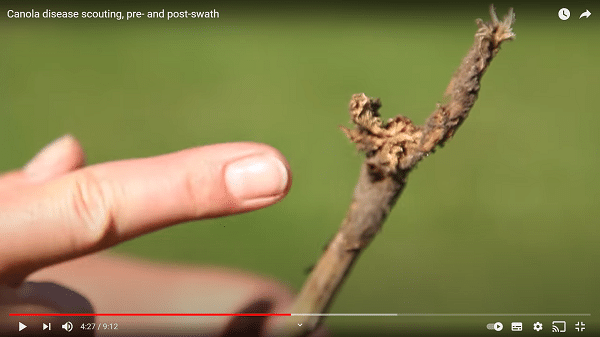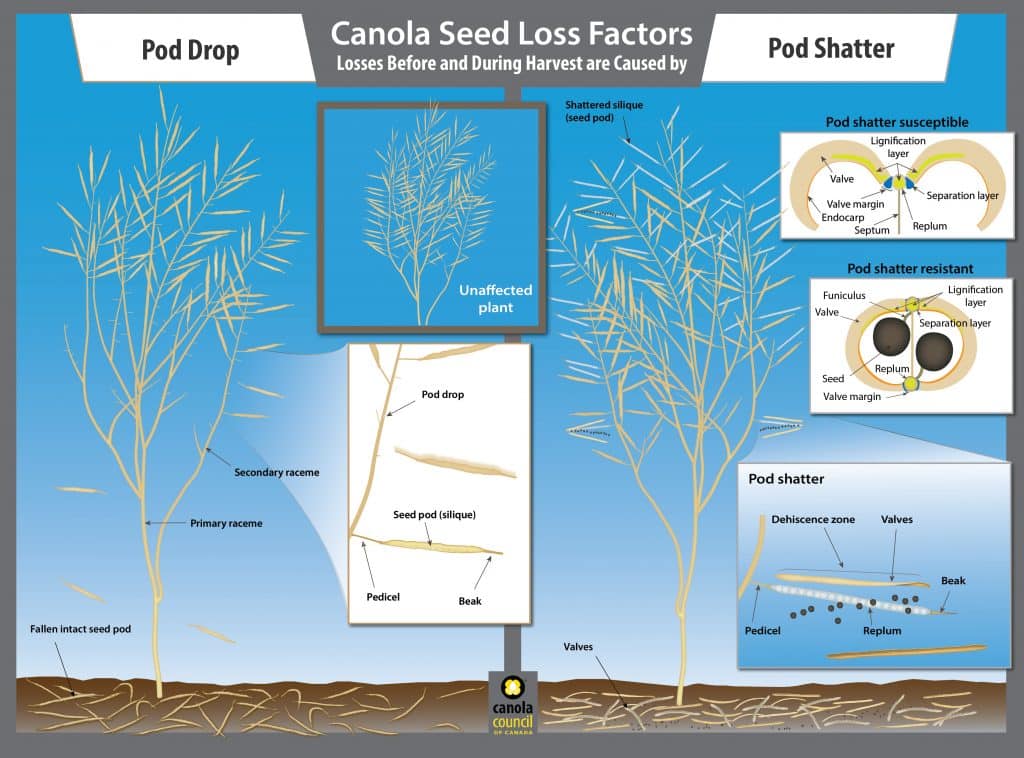
Combine optimization critical this year
Most producers across the Prairies agree this has been one of the most challenging canola growing seasons in recent memory. Every seed this year is precious and you can’t afford to lose a single one out of the back of your combine. Combine optimization is critical. This tool is designed for optimizing most combines in most conditions. The harvest loss tool can be used to calculate your estimated harvest losses based on a harvest seed loss sample. For a comprehensive look at harvest management, read this Canola Encyclopedia article.
Swath timing in a strange, difficult year — some advice
Hot, dry conditions can cause canola to have irregular attributes. For example, there are some reports of seeds not changing colour even though they’re firm to touch. There have also been examples of increased branching with few pods on the main stem. So, given these and other irregularities, how do you determine the right time to swath and capture the best information on where the bulk of your yield is coming from? This new article features up-to-date information on how to harvest thin, low-yielding canola while also addressing crop growth irregularities. A common question among producers is whether to swath or straight-cut this year. Consult this article for information on making this decision. The first article linked above also includes timely advice on this common debate.
Pod shatter and pod drop — what’s the difference?
“Pod shatter” and “pod drop” are two culprits often identified as causes of canola seed losses. But what’s the difference between them? The simplest answer is that pod shatter tolerance is a genetic trait while pod drop is caused by environmental conditions. Shatter-resistant canola cultivars have minimized shatter to an extent, and pod drop is generally caused by wind. Either way, both can cause loss of valuable seed and should be scouted for prior to harvest. Shake a few plants to simulate a strong wind and check if pods are dropping. If they are, the crop should probably be combined as soon as possible. Information on new research aimed at developing methods to estimate pod drop and pod shatter in canola is available here.
Resources for scouting late-season diseases and pests
Scouting for late-season diseases such as clubroot, blackleg and verticillium stripe is optimal at this time of year. Keep clippers in your back pocket and a shovel in your truck or swather to assess possible damage from these diseases. Canola pests such as cabbage seedpod weevil, lygus bugs, flea beetles and bertha armyworm are still popping their heads (and other more damaging appendages) up across the Prairies. This article offers ideas for packing a “scouting toolkit” for pest management. Whatever the results of scouting, however, remember that pre-harvest intervals for spraying are either closing or have already expired. Be sure to consult the Spray to Swath Interval Calculator before risking marketability with an untimely spray. Finally, a heads-up: lygus bugs tend to plug up screens on swathers, so check your screens regularly.


